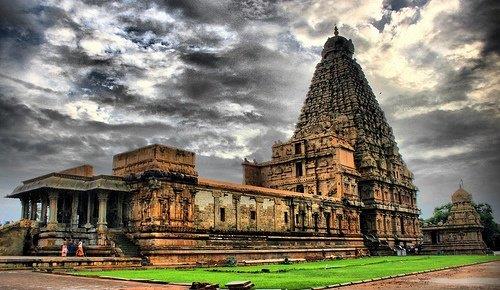prekforalldc.org – The Brihadeeswarar Temple, located in Thanjavur, Tamil Nadu, is a magnificent example of Dravidian architecture and a testament to the artistic prowess of the Chola dynasty. Also known as Peruvudaiyar Kovil, this temple is one of the most significant architectural achievements in India and a UNESCO World Heritage Site. This article delves into the history, architecture, and cultural significance of the Brihadeeswarar Temple.
Historical Background
Constructed during the reign of Raja Raja Chola I in the early 11th century, the Brihadeeswarar Temple embodies the zenith of Chola architectural and engineering skills. It was built to honor Lord Shiva and to demonstrate the power and wealth of the Chola dynasty. The temple’s original name, Rajarajeswaram, reflects its connection to the king who commissioned its construction.
Architectural Splendor
The Brihadeeswarar Temple is renowned for its towering vimana (temple tower), which stands approximately 66 meters high, making it one of the tallest in the world. The vimana is topped by a massive monolithic cupola, weighing around 80 tons, and is a remarkable feat of engineering. The temple complex is laid out in a rectangular plan, with a sanctum, assembly hall, and a large courtyard.
Intricate sculptures and frescoes adorn the temple walls, depicting scenes from Hindu mythology and showcasing the artistry of the Chola artisans. The temple’s massive Nandi statue, carved from a single stone, is one of the largest in India and sits majestically at the entrance.
Cultural Significance
The Brihadeeswarar Temple is not only a place of worship but also a cultural and artistic hub. It played a vital role in the religious and social life of the Chola empire, serving as a center for music, dance, and other cultural activities. The temple continues to be an important pilgrimage site, attracting devotees and tourists from around the world.
Conclusion
The Brihadeeswarar Temple stands as a testament to the grandeur and sophistication of Chola architecture. Its historical and cultural significance, combined with its architectural brilliance, makes it a must-visit destination for anyone interested in India’s rich heritage. The temple’s enduring legacy continues to inspire awe and admiration, reflecting the timeless beauty and spiritual depth of Indian civilization.
